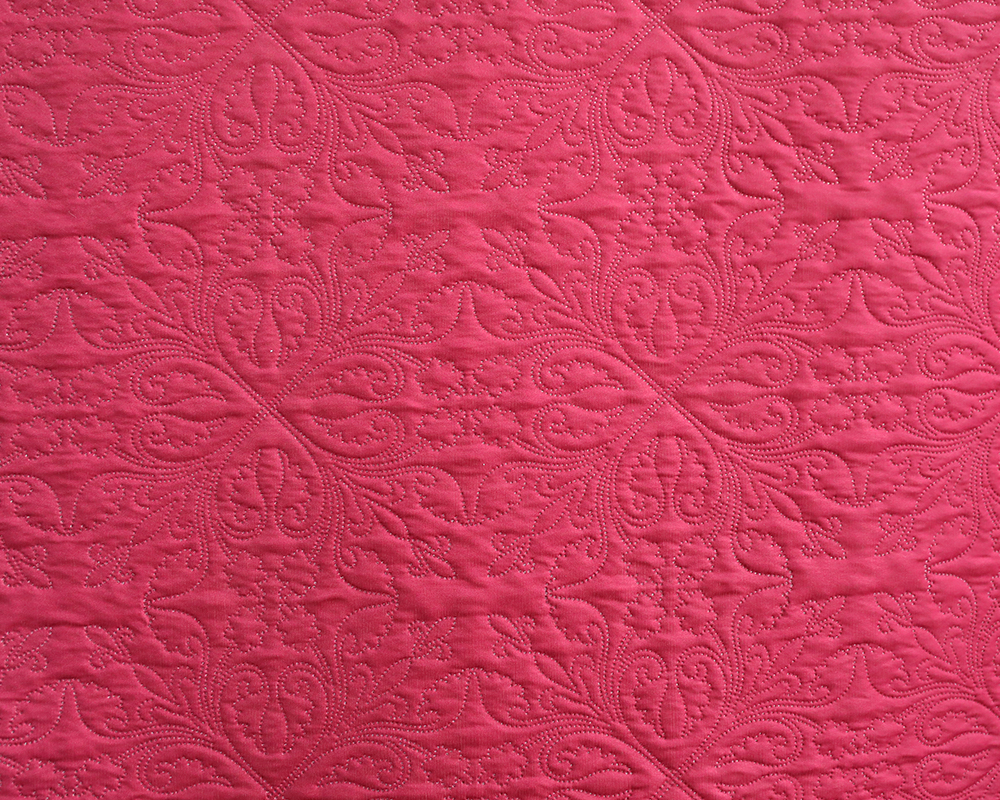Search...
In the ultrasonic dyeing process of Dyed Ultrasonic Fabric, temperature and pressure are two key process parameters. They have a significant impact on the dyeing effect, dye penetration, fabric texture and dyeing uniformity. Reasonable adjustment of temperature and pressure can improve dyeing quality, shorten dyeing time, and improve the performance of the final fabric.
Temperature is an important factor affecting dye diffusion, penetration and reaction rate during the dyeing process. Ultrasonic dyeing technology triggers local temperature rise through ultrasonic vibration, thereby enhancing the solubility of dyes and the affinity of fibers. Specific impacts include:
At high temperatures, dye solubility and diffusivity generally increase. As the temperature increases, the dye molecules can penetrate into the fiber more quickly, resulting in a more uniform dyeing effect.
Under the action of ultrasonic waves, the increase in temperature can further improve the permeability of the dye, making it easier to penetrate into the fiber structure and achieve better dyeing uniformity.
Higher temperatures speed up the dyeing reaction. Under the action of ultrasonic waves, the affinity between dyes and fibers is enhanced, thereby promoting the rapid progress of the dyeing process. Typically, a moderate temperature rise can significantly shorten dyeing time.
If the temperature is too high, it may cause volatilization loss of the dye, reduced gloss or excessive reaction of the dye, resulting in color distortion of the fabric.
At high temperatures, the structure of fabric fibers may undergo certain changes, resulting in changes in the feel of the fabric. Although appropriate temperature can improve the dyeing effect, too high temperature may affect the softness of the fabric, causing the fabric to become brittle or shrink.
During the ultrasonic dyeing process, moderate temperature control helps to maintain the softness of the fabric and avoid excessive drying of the fibers.
Temperature within a certain range can improve the binding force between dyes and fibers and improve the color fastness after dyeing. Especially in the ultrasonic dyeing process, temperature accelerates the improvement of color fastness.
However, excessively high temperatures may cause degradation or adverse reactions of certain dyes, affecting color fastness, especially in terms of light and rubbing performance.
Temperature uniformity is critical to dyeing results. If the temperature is too high or too low, it will lead to uneven dyeing and color difference. In order to achieve uniformity of dyeing results, it is necessary to ensure a balanced distribution of temperature during the dyeing process.
During the ultrasonic dyeing process, pressure is usually applied through external equipment and further affects the dyeing effect of the fabric under the action of ultrasonic vibration. Changes in pressure mainly affect the dyeing effect through the following aspects:

Within a certain range, applying appropriate pressure can help the dye better penetrate into the microstructure of the fiber, which is especially important for fabrics with higher density or tighter fiber structure (such as synthetic fibers). The pressure helps the dye molecules break through the barrier layer on the fiber surface and enter the interior of the fiber.
Appropriate pressure can also strengthen the affinity between dyes and fibers, improve the adsorption capacity of dyes and dyeing efficiency.
The increase in pressure will affect the transmission efficiency of ultrasonic vibration. In the ultrasonic dyeing process, the effective transmission of ultrasonic energy directly determines the uniformity and depth of dyeing. Higher pressure helps increase the vibration frequency and intensity of ultrasonic waves, allowing the dye to be distributed faster and more evenly on the fabric surface.
However, excessive pressure may cause the fiber to be subjected to too much physical action, causing changes in its shape or structure, which in turn affects the uniformity of dyeing and the performance of the fabric.
Appropriate pressure helps the fabric surface evenly contact the dyeing solution, increases the adsorption capacity of the dye, and promotes the even diffusion of the dye. However, excessive pressure may cause the fiber structure of the fabric to be compressed or deformed, affecting its original feel or texture.
Especially during the ultrasonic dyeing process, excessive pressure may cause damage to the surface structure of the fabric, causing wrinkles or wear on the surface, affecting the dyeing effect.
Appropriate pressure can help regulate the depth of staining. In the ultrasonic dyeing process, the penetration depth of dyeing can be controlled by adjusting the pressure, making the dyeing effect of the fabric more uniform.
If the pressure is too high, the dye may penetrate too deeply, causing the color to be too dark; if the pressure is too low, the dye may not penetrate enough and the dyeing effect will be lighter, which may not meet the requirements.
Proper pressure helps maintain the stability of the dyeing process. Excessive pressure changes may cause fluctuations in the working efficiency of ultrasonic equipment, thereby affecting the stability of the dyeing effect. Therefore, maintaining a stable pressure environment is an important step in ensuring dyeing quality.
In the ultrasonic dyeing process, temperature and pressure have an important impact on the dyeing effect. Precise control of temperature and pressure is the key factor to ensure high-quality and stable dyeing results.

 English
English
 中文简体
中文简体
 Español
Español





.jpg?imageView2/2/format/jp2)






